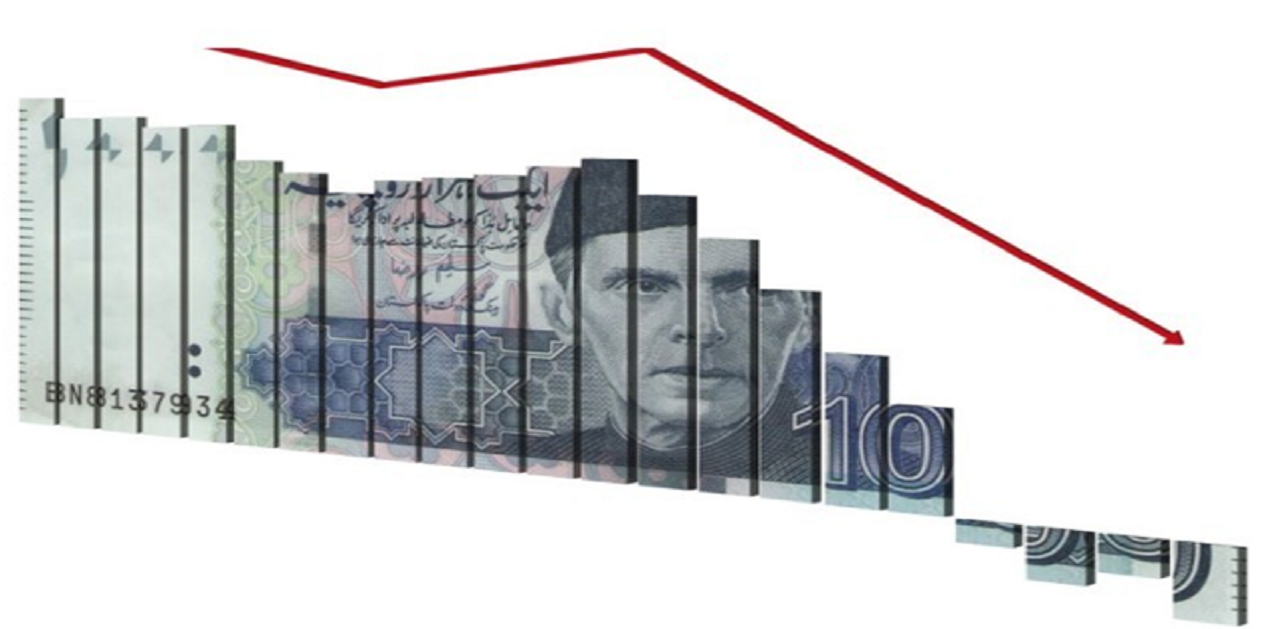Pakistan is a country in which the economy has remained in a perpetual state of crisis. If we look at the track record of Pakistan, we see a problematic situation. Quite categorically we see from human development indicators like health and education to economic parameters like tax-to-GDP ratio, currency performance and forex reserves, Pakistan’s record has been deeply bleak and asymmetrical.
Despite this, recently an optimistic outlook of the economy was presented by Pakistan. On 11 June 2021, the PTI-led government presented the federal budget for the fiscal year 2021-2022. Pakistan Finance Minister Shaukat Tarin presented it at a time when Pakistan’s debt-ridden economy was facing an economic crisis aggravated due to the coronavirus pandemic. He pointed out how the government had successfully progressed from recovery and stabilisation to sustainable growth.
For the next year the total expenditure budget is set at Rs 8,487 billion. As far as the fiscal front is considered the situation remains complex as the budget 2021 expects to collect PKR 5.83 trillion in taxes1. This is 24 percent more than the estimated PKR 4.69 trillion that Pakistan hopes to collect in theoutgoing fiscal2. On the other hand, the situation remains dire as almost the entire net revenue is accounted for by debt servicing PKR 3.1 trillion and defence expenditure of PKR 1.37 trillion. Everything else is paid from borrowed money. The government is further targeting a GDP growth of 4.8 percent for FY223. It is speculated that if this is achieved it will be the highest GDP growth since FY184. Clearly, the budget tells a story steeped in ambition.
The rosy narrative about the economy being on a path of recovery has been articulated for some months in Pakistan. The government reported a higher-than- expected economic growth rate when the National Accounts Committee (NAC) approved a GDP growth of 3.94 percent against the fixed target of 2.1 percent5. We see this figure is completely opposite to the estimates of multilateral financial institutions, most importantly the International Monetary Fund and the World Bank, whose growth projections for Pakistan were 1.3 and 1.5 percent, respectively. It even exceeds the State Bank of Pakistan estimate of 3 percent GDP growth6. Prime Minister Imran Khan subsequently tweeted that “this reflects the success of our govt's economic policies while managing Covid-19 pandemic,” He further added that the “V-shaped recovery is balanced between 3 major sectors: agriculture, industry & services. However, independent economists and opposition politicians have challenged the figure and called it fraudulent. They pointed out that the latest projections followed a very low base from last year7.
The fact is that beyond the headline numbers and the promising narrative of economic recovery, the economic situation remains grim. If we look at the Economic Survey, the performance of the agricultural sector this year was 2.7 per cent as compared to the 3.3 percent last year. This stark downturn in the agricultural sector has led to a marked decrease in cotton production, the country's main crop, which will fall by 22 percent to 7 million bales in the present fiscal year8.
The major problem that Pakistan faces is the surging external debt and liabilities and consequent debt servicing. Pakistan has already been trapped into a sovereign debt "danger zone" with total liabilities and debts of USD 294 billion projecting a 109 per cent of GDP as of 30 December 20209. As reported by Dawn, the last 15 years have seen a varying growth of country’s external debts and liabilities10. However, no effort has been made during this period to categorically contain the exponential increase in the burden. Further, debt servicing constitutes of 75 percent of the Federal Board of Revenue (FBR) taxes.
Pakistan is also burdened with high inflation that remained high throughout year, reaching a peak of 11.1 percent in April 2021, eroding the citizen’s purchasing power. Recently, the State Bank of Pakistan raised important concerns regarding the food inflation, which remains at a fundamental risk “especially in the wake of recent flood-related damages and potential locust attacks11.”
There also continues to be massive rise in unemployment, poverty and hunger in Pakistan. It is pertinent to note that because of COVID-induced lockdowns the number of unemployed people in Pakistan has fundamentally increased. This is indicative of the fact that millions of people are out of the work despite a projected 3.9 percent GDP growth. However, according to an official report, the projected growth of the economy has not included the informal sector in which three of every four people lost their livelihoods between April and July last year12.
Government and international statistics show revealing picture of poverty among Pakistan’s rapidly expanding estimated 220 million population is on the rise. 5.8 million additional people fell into poverty in 2020 as a consequence of the Covid-19 pandemic. It is important to see that international lenders expect poverty to increase to more than 40 percent from 24 percent in 2015, and the country could be home to as many as 80 million poor compared to some 55 million in 201513.
Inflation and unprecedented hike in power and energy tariffs, coupled with a sharp decline in income of the middle, lower-middle and working classes has brought about extraordinary hardships for ordinary people. According to National Human Development Report, “Pakistan’s people do not benefit equally from public expenditure.14” The authors of the report while tabulating the benefits of total public expenditure — including via pro-poor programmes such as Ehsaas — found that the estimated share of benefits from this government expenditure for the poorest one-fifth of the population was 14.2 percent, while for the richest one-fifth of the population it was 37.2 percent
Pakistan has been under the USD 6 billion loan agreement with the IMF since 2019 and the front loaded conditionalities have adverse impact on Pakistan’s economy. Pakistan and IMF have so far failed to narrow down their differences, as Pakistan has still not accepted the two conditions imposed by IMF that is raising the electricity tariffs and raising the revenue. The conclusion of the sixth review under the $6 billion Extended fund facility (EFF) has been under a hold till September 2021. Pakistan remains in a precarious position, as it cannot afford to walk out of the IMF programme. This probably might have far reaching consequences for the economy of Pakistan.
Pakistan also remains under the scrutiny of the terror watchdog Financial Action Task Force (FATF) as it has retained the country on its “grey list”. According to an Islamabad-based think tank Tabadlab, Pakistan sustained a total of USD 38 billion in economic losses due to FATF's decision to thrice place the country on its grey list since 200815. Hence, being on FATF’s grey list will further cause serious damage to Pakistan’s economy. Other than these factors increased instability in Afghanistan in the wake of US troops’ withdrawal will have spillover effect on Pakistan’s economy.
Economic uncertainty is far from over especially in the wake of the impending fourth wave of Covid-19. It’ is, therefore, too early to say that Pakistan is on the path to economic recovery. An in-depth restructuring of the economy is what is needed. Unless the structural problems of economy in the form of savings-investment deficit, the expenditure-revenue deficit and the import-export deficit are tackled, it will remain in doldrums.
References
- https://www.orfonline.org/expert-speak/pakistan-budget-2021-22-dodgy-data-wild-assumptions/
- Ibid
- https://www.brecorder.com/news/40099452/pakistan-targets-48-gdp-growth-in-upcoming-fiscal-year
- https://www.dawn.com/news/1628629
- https://www.dawn.com/news/1624995
- Ibid
- https://economictimes.indiatimes.com/news/international/business/leading-pakistan-economists-doubtful-over-countrys-3-94-per-cent-gdp-rate/articleshow/83062277.cms?from=mdr
- https://www.daily-sun.com/post/560891/Pakistan:-Failing-economy-polarised-politics
- https://timesofindia.indiatimes.com/world/pakistan/pakistan-economic-crisis-intensifies-as-china-refuses-to-provide-debt-
- https://www.dawn.com/news/1632088
- https://www.usip.org/publications/2020/10/pakistan-faces-long-road-sustainable-growth
- https://asianlite.com/2021/top-news/pak-unemployment-rates-soar-despite-projected-growth/
- https://gandhara.rferl.org/a/pakistan-failing-economy/31272373.html
- https://www.aljazeera.com/news/2021/4/13/elite-privilege-consumes-17-4bn-of-pakistans-economy-
- https://www.aninews.in/news/world/europe/fatf-grey-listing-caused-usd-38b-loss-to-pakistan-report20210225184820/
(The paper is the author’s individual scholastic articulation. The author certifies that the article/paper is original in content, unpublished and it has not been submitted for publication/web upload elsewhere, and that the facts and figures quoted are duly referenced, as needed, and are believed to be correct). (The paper does not necessarily represent the organisational stance... More >>
Image Source: https://profit.pakistantoday.com.pk/wp-content/uploads/2020/05/Pakistan-economy.png











Post new comment